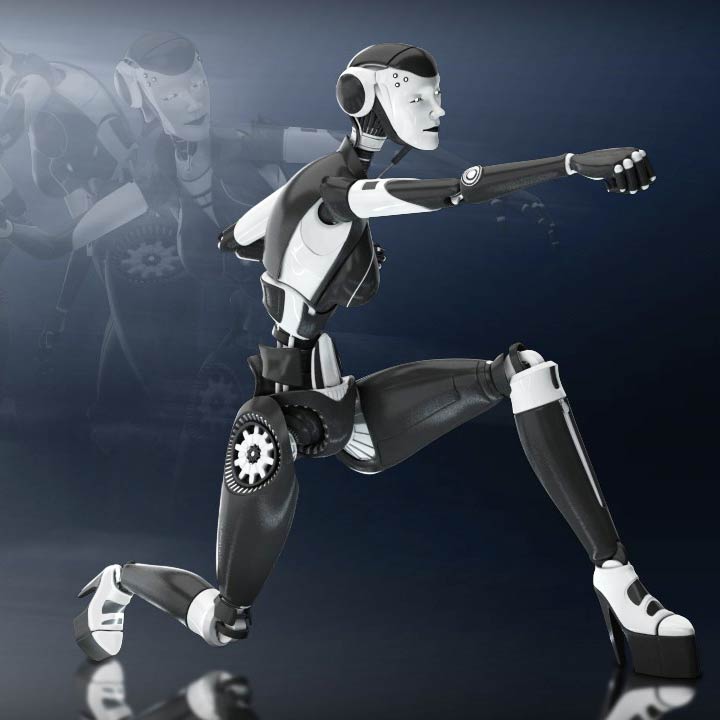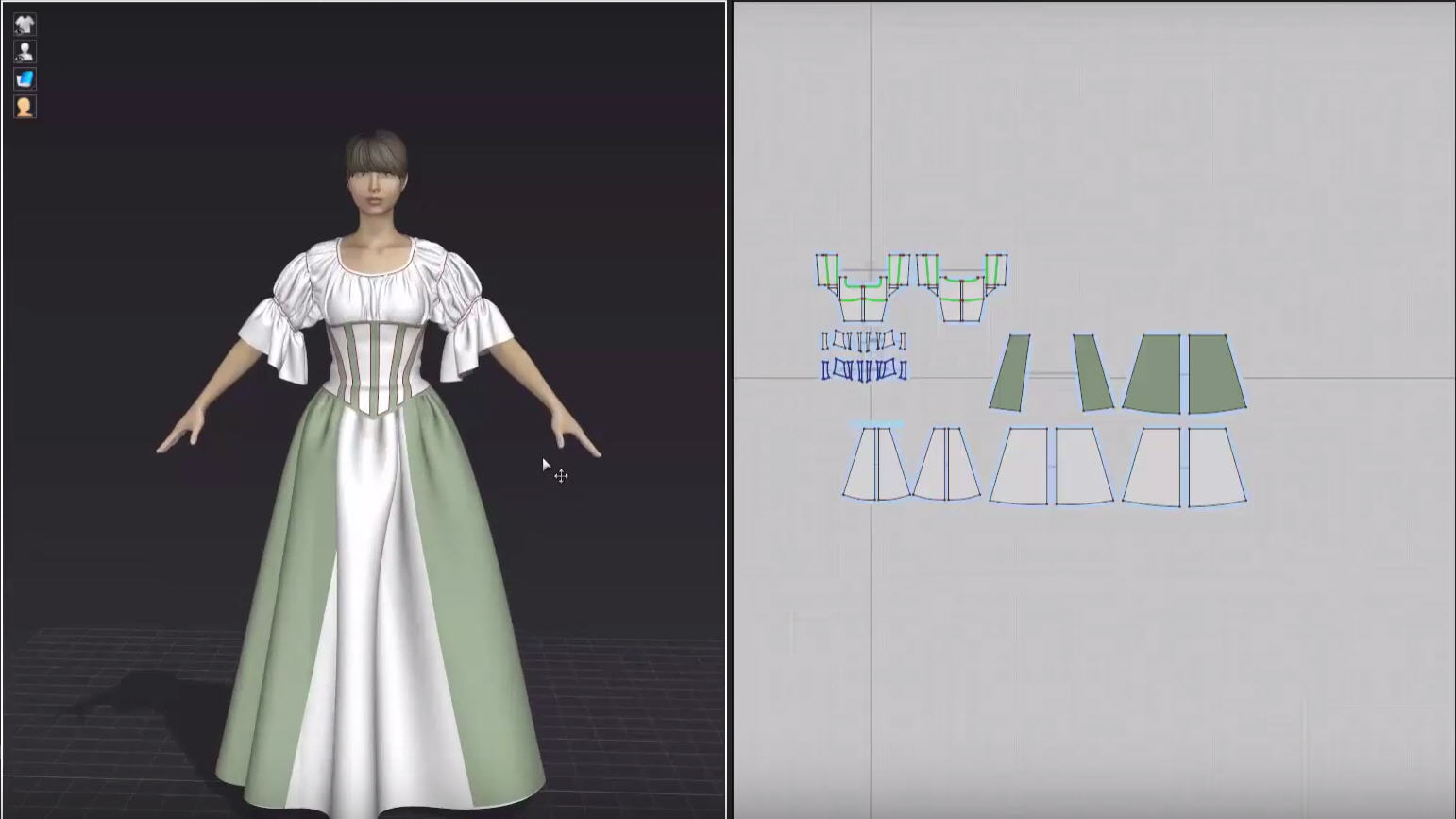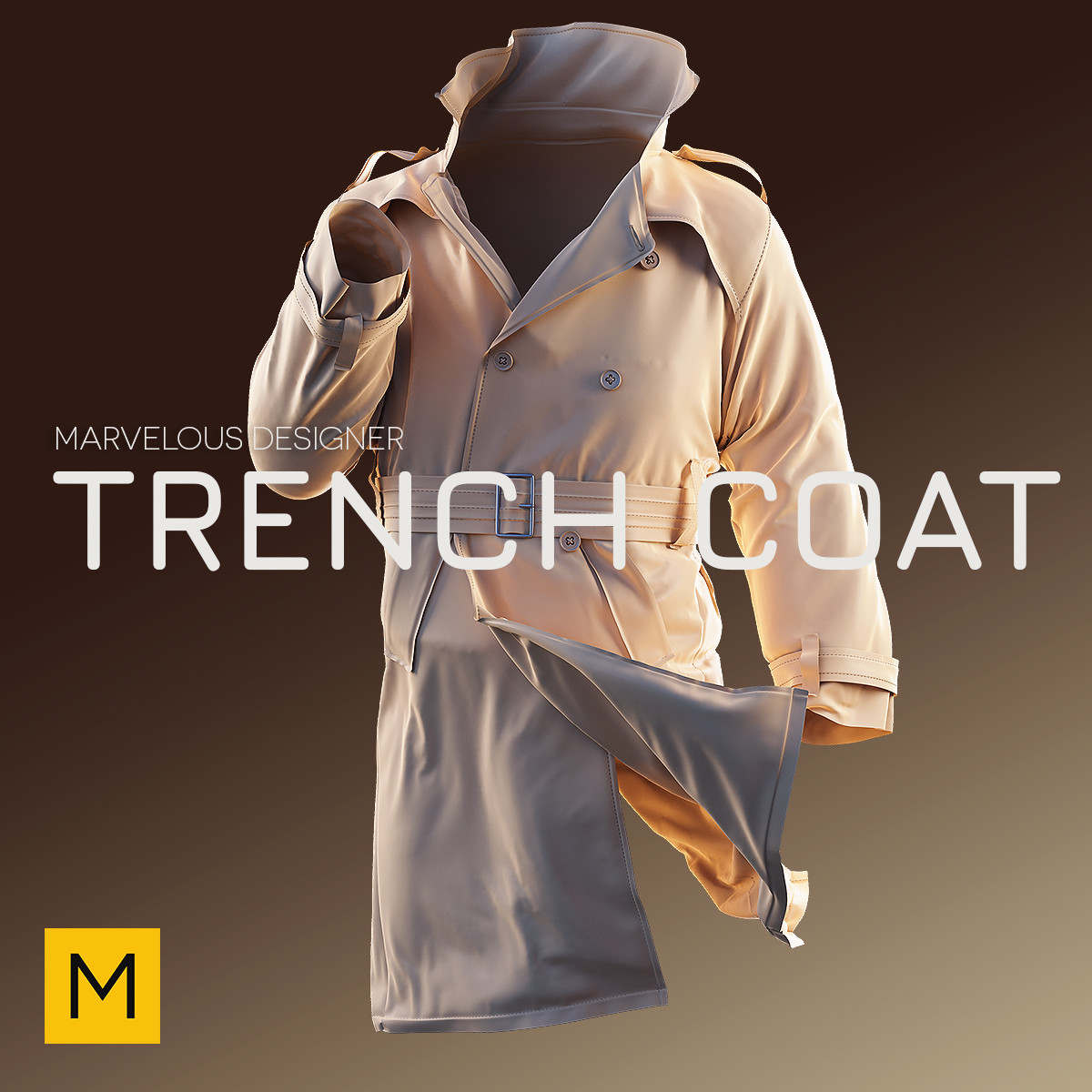In Maya 2018 I created a polyCube, a default maya camera, and a joint. They all had the same animation on them and were not in a hierarchy. I exported them all as an FBX with default settings. I imported them into Marvelous 8. I see the items in my scene hierarchy within Marvelous, I can set my camera to be the one that I imported. Try using the great new Solidify Tool in Marvelous Designer 6, to more or less “freeze” the ribbon parts, so they don’t change/ untie during animation. Note: Solidify is different than the Freeze function which Freezes the pattern in 3D space (and will stay in that exact place even when your avatar walks off ripping the clothes off her). Step 03: Garment creation in Marvelous Designer In Marvelous I start by importing a new model which is in 'A' pose, this is super helpful because you can easily use the symmetry modifier to create all your garments faster. In this process I always try to start by creating bigger shapes, then medium and finally the details of each one of the pieces.
Introduction
This little tutorial is focused on the work that I usually do when it comes to keyframe concept creation. It covers my workflow, beginning with creating initial sketches in Photoshop which provide me with enough information to begin the 3D process. That allows the creation of a more realistic illustration using several specialized software packages for each step of the process.

Final Keyframe Concept
Step 01: Thumbnails, ideation and sketching big
In this first stage, I start by dropping some ideas into the canvas. The main purpose is to stay loose which helps me to focus more on composition and storytelling. It's a more private or personal step where all of the fast sketches are only to ground the ideas.
After that, I start to refine some more of the previous ideas that I have developed. The goal here is to try to achieve a more grounded result by introducing more elements into the composition, such as the background in this case and more dynamism in the characters, this will start to help me building a more readable concept.
Black and white sketching is useful to evaluate early the shapes and values that you may want for the final image


Step 02: DAZ Posing
Thanks to DAZ, the posing phase becomes more easy and efficient, mainly because the models that it has are already rigged. It's just matter of creating a really cool pose that is also believable and helps to tell the story.
DAZ for quick character base and pose creation
Step 03: Garment creation in Marvelous Designer
In Marvelous I start by importing a new model which is in 'A' pose, this is super helpful because you can easily use the symmetry modifier to create all your garments faster. In this process I always try to start by creating bigger shapes, then medium and finally the details of each one of the pieces.
For the garment creation remember to go Big>Medium>Small shapes
Step 04: ZBrush Sculpting
Inside ZBrush, at least for these characters, I created different props like the boots and the mask that covers the neck and the chin, also the weapons.
Mainly this type of work is done with DynaMesh and the sculpting techniques with the standard brushes such as Clay Build-up, Dam Standard, Clay, etc. For other props like the weapons, the process is more efficient with ZModeler and Live Boleans. I also split my meshes here into different sub-tools depending on the type of material that I will use in Keyshot.
Here it's important to remember that this is use for concept, which means that some details can be added after in Photoshop more easily
Step 05: Keyshot Workflow.

In Keyshot the process that I use is really basic, just by dragging and dropping different basic materials with minor tweaks here and there is more than enough to get a decent result. The lighting is provided by an HDRI, It's important that it has a great balance between shadow and light. Even with this it's good to have some pins that will help you to emphasize the intention that you want to add to your composition.
I don't spend so much time here; the core of my process is inside Photoshop. Always remember that this is a concept
Step 06: Render Passes

As you saw in the latest image, I usually select all the render passes from my Keyshot render options. That's because sometimes I'm not sure about the exact passes that I may want. In the image below you can see the most common renders that almost every time I work with.
Render Passes. Ready for the most fun part of the process!
Step 07: Composition Part One
In this first part I basically started to mix all my renders from Keyshot and then start exploring the final details that I would like to have in my final image. Using different texture images, such a grunge textures for the garments and some photos from real locations I build the background and the ambience.
Keyframe Animation Software
Step 08: Composition part two
After I had a good start with the composition itself, here I'm more focused on the little details that make my image more believable, like the character's hair and face. This is more a 'zoomed in' working process, where my goal is to build the main areas of my composition with more details and also fixed the ones that I think that don't look how I think they should.
Step 09: Final Looks
For this last part, my goal is to make the image more atmospheric, that's why I like to use some fog, lens flares, and ambient effects. In this case I added some rain FX and some light and flares photos from photobash.org and also I played more with the values which helped me to get a better mood and look.
Top tip 01: Photoshop Layers Work
This is a small breakdown of the way that I use to work with layers inside Photoshop. The process varies depending on the image that you are working with, but the structure is almost the same in all of my artworks. If you want to know more about this workflow, you can visit my gumroad page where you can find a go through process video about this.
Photoshop breakdown
Fetching comments...
Marvelous Designer Layers
Post a comment
Related
Marvelous Designer Keyframe Animation After Effects
Tutorial: Arnold
Model a stylized 3D orc in ZBrushNews: Reviews
Corona Renderer 6 Review